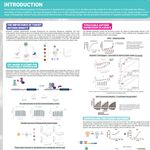Board certified in Anatomic Pathology; Professor Emeritus of Pathology and Cell Biology, Columbia University; Consulting Pathologist, Enzo Clinical Laboratories
BIOGRAPHY

Speaker
Event Date & Time
Date: October 7, 2020
Time: 9:00am (PDT), 12:00pm (EDT)
Abstract
Recently the FDA approved the BD Onclarity™ HPV assay as a test to identify HPV high-risk genotypes in addition to HPV 16 and 18 (i.e., extended genotyping). The Onclarity assay is designed to identify the 14 high-risk HPV genotypes either individually (HPV 16, 18, 31, 45, 51, 52) or as a pooled mixture of two to three genotypes (HPV 33/58, 35/39/68, 56/59/66). Because different HPV genotypes are associated with different risks of CIN 3, the use of extended genotyping offers a useful tool when following the “risk-based” management strategy recently adopted by the American Society of Colposcopy and Cervical Pathology (ASCCP). For example, when screening using cotesting, women with a NILM cytology result who are positive for HPV 31 have more than twice the 3 year cumulative incidence rate (CIR) for CIN 3 (9%) as HPV 18 positive women (4.4%) and over three times the 3 year CIR for CIN 3 as women with HPV 45, 52, or 33/58 (2.9-2.3%). This suggests that women with NILM who are positive for HPV 16, 31, or 18 should be referred for immediate colposcopy whereas women positive for HPV 45, 52, or 33/58 should undergo repeat cotesting at 12 months. Moreover, women with NILM who are positive for only HPV 56/59/66 have a low enough 3 year CIR (0.3%) that they could simply return for repeat cotesting in 3 years. Extended genotyping can also assist in the management of women with ASC or LSIL cytology. Women with ASC or LSIL cytology who are positive for either HPV 33/58 or HPV 45 have a low enough 3 year CIR (3.7% and 2.1%, respectively) that they could return in 12 months for repeat cotesting rather than undergo immediate colposcopy. As with women with NILM cytology, the 3 year CIR for women with ASC or LSIL cytology who are positive only for HPV 56/59/66 is low enough (0.0%) that they could safely return for repeat cotesting in 3 years.
Learning Objectives
- Describe the unmet needs associated with current “risk-based” management guidelines for women with abnormal cervical cancer screening tests.
- Formulate strategies that maximize the risk stratification obtained using extended genotyping within clinical practice.
Webinars will be available for unlimited on-demand viewing after live event.
LabRoots is approved as a provider of continuing education programs in the clinical laboratory sciences by the ASCLS P.A.C.E. ® Program. By attending this webinar, you can earn 1 Continuing Education credit once you have viewed the webinar in its entirety.
You May Also Like
DEC 10, 2024 | 9:00 AM
To-date, proteomic analysis has been severely limited in scale and resolution. Analyzing protein samples using an intact, single-molecule approach holds th...
APR 21, 2025 | 1:00 PM
C.E. CREDITS
Routine coagulation assays are widely performed in laboratories and provide valuable information to the patient’s overall clinical picture. It’s important for laboratorians to kn...
Speaker:
Malissa S Norfolk, MBA, PMP, MLS(ASCP)ᶜᵐSHᶜᵐ
FEB 25, 2025 | 1:00 PM
C.E. CREDITS
Quality efforts in the clinical laboratory are always under the microscope- a hyper-focus for laboratorians from start to finish. Recognizing the external factors that affect hemostasis test...
Speaker:
Rae Kerlin, BS, MLS (ASCP), NCA
APR 02, 2025 | 11:00 AM
Join this year's poster presenters in the Poster Hall during the Poster Networking Hour, Wednesday, September 20th, from 10:00 AM –11:00 AM PDT , to chat live about their posters a...
MAR 19, 2025 | 11:30 AM
Join this year's poster presenters in the Poster Hall during the Poster Networking Hour, Wednesday, March 5th, from 10:00 –11:00 AM PDT , to chat...
Loading Comments...
Please update your information
Certificate of Attendance
Thank you for choosing Labroots. Please note that a Certificate of Attendance does NOT count towards Continuing Education Credits.
DOWNLOAD CERTIFICATE
DOWNLOAD CERTIFICATE
You must watch the entire webinar to receive your certificate of attendance.
You must attend the event before receiving your certificate of attendance.
You must register for the event first.
Certificate is no longer available for this event.
You must be logged in to retrieve your certificate.




